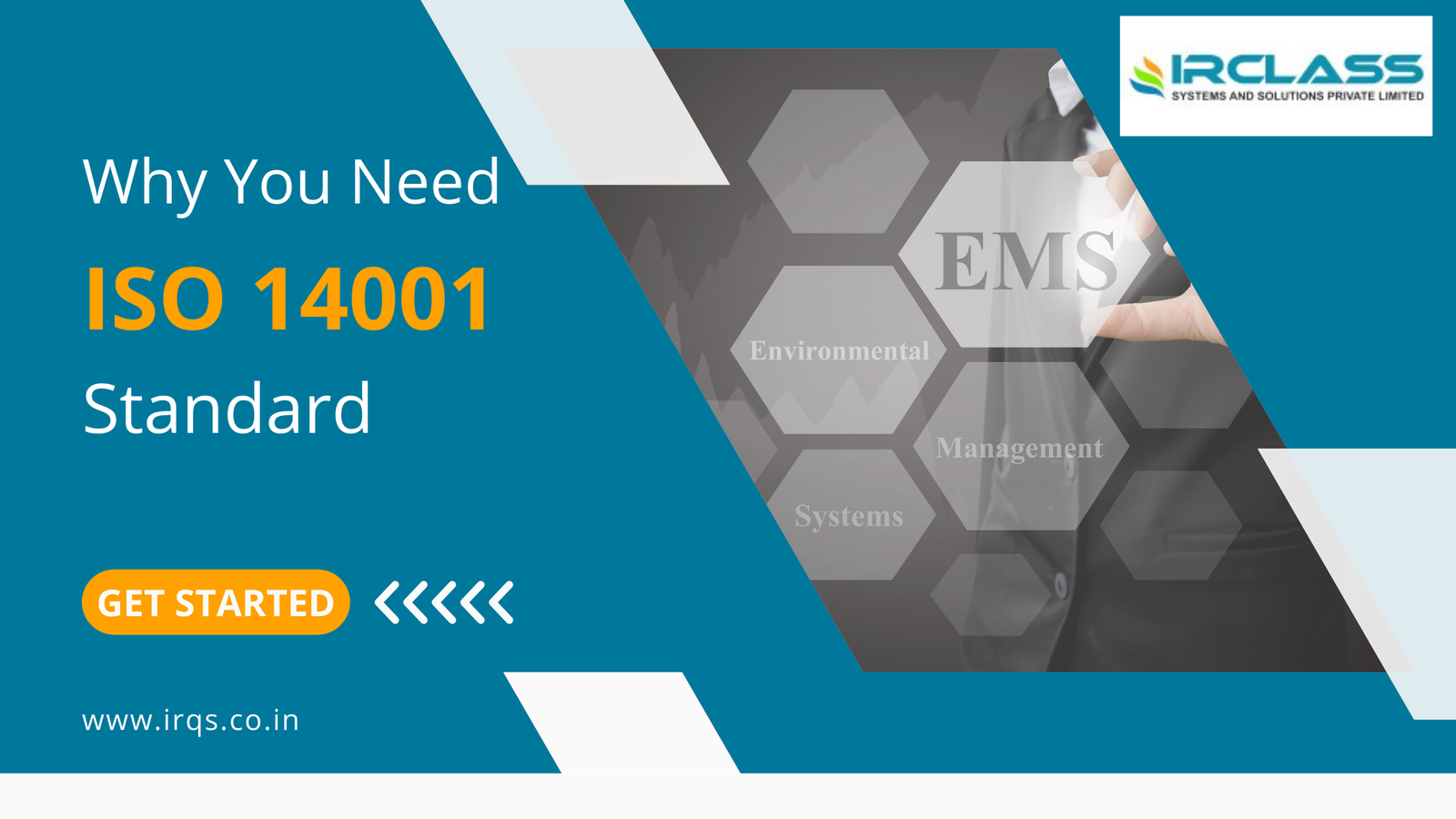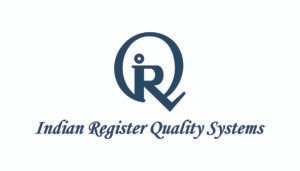Tag: ISO 14001 Certification

Ship Recycling Regulations Worldwide: The Ultimate Guide
More than 80% of the international business is carried out through sea transport. But what happens when these huge vessels reach the end of their service life? This is where ship recycling comes into play. It is a sustainable practice that disassembles old ships, recovers valuable materials and disposes of hazardous waste safely. But if not well monitored, this process is likely to cause havoc to the environment and endanger the lives of workers. In this post, we will explore the world of ship recycling regulations, why they are important, and how your organization can avoid non-compliance. Why Ship Recycling is Crucial A ship is not abandoned when it is retired from service, but rather it is reused. It becomes a storehouse of materials and aids in the elimination of possible environmental problems through recycling. 1. Environmental Impact You probably didn’t know that a single ship can yield up to 30,000 tons of steel. That’s a lot of metal! The recycling ships reduce the demand for raw materials and slash greenhouse gas emissions from the extraction processes. Most importantly, handling of hazardous materials such as asbestos and heavy metals does not pollute ecosystems. 2. Economic Significance Ship recycling is not only an environmental imperative, but it is an economic powerhouse. This sector is the lifeline of thousands of workers in South Asia, where it accounts for 70% of the global shipbreaking industry. It’s a win-win: The local economy thrives, and recovered materials fuel other industries. 3. Regulatory and Ethical Obligations Today, companies are being pressured more than ever to meet Environmental, Social, and Governance (ESG) standards. Ship recycling is not just about compliance with legal requirements, it’s about showing your responsibility for sustainable, ethical practices. Non compliance could cost more than just fines, it could damage your reputation, and stakeholders are watching. Global Ship Recycling Regulations: A Look Regulations vary by region, but their goal is the same: ensuring ship recycling is safe, efficient and environmentally sound. 1. Hong Kong International Convention (HKC) The HKC, adopted in 2009, is the benchmark for ship recycling safety. The requirements are being embraced by many shipowners, even though it will not become official until 2025. HKC has strict guidelines, from maintaining an Inventory of Hazardous Materials (IHM) to recycling only at certified facilities, to protect people and the planet. 2. European Union Ship Recycling Regulation (EU SRR) The EU SRR is mandatory if your ship flies an EU flag or docks in EU ports. This regulation, which was active since 2018, goes a step further by requiring that recycling is only done in approved facilities. It also requires continuous IHM maintenance, to keep track of hazardous materials through the ship’s life. 3. Basel Convention Hazardous wastes, including end-of-life ships, are governed by the global movement of hazardous wastes under the Basel Convention, which dates from 1989. It makes sure that waste is treated properly and that toxic materials are not dumped in developing countries. Although it’s not ship specific, it’s an important tool in regulating the disposal of hazardous waste during ship breaking. 4. National Frameworks India and Bangladesh have enacted national laws that conform to the global standards. For instance, India’s Ship Recycling Bill, 2019, which is based on HKC’s provisions, focuses on safety and environmental care in its shipbreaking yards. Emerging Trends in Compliance Ship recycling isn’t static. It changes, affected by technological improvements and changing regulatory environments. 1. HKC’s Growing Influence This is a new era, the HKC will be fully implemented in 2025. Its influence is undeniable, as over 60% of the global fleet already adheres to its standards. More countries are expected to ratify the convention, increasing the requirements of compliance for the industry as a whole. 2. Compliance Digital Solutions Complex processes are being simplified by technology. Innovation is enabling transparency and reducing administrative burdens in blockchain systems that track hazardous materials and digital tools that streamline IHM documentation. 3. ESG Reporting is Here to Stay Environmental impact is now a central part of corporate reporting. Investors and stakeholders need detailed information about recycling practices. ESG criteria is no longer a choice—it’s a must to remain competitive. 4. Tech Breakthroughs in Recycling Recycling is becoming safer and greener through innovation. Robotic systems for asbestos removal are cutting edge machinery that is reducing risks and increasing efficiency. These are changing the industry, and they are bringing us a safer future for workers and the environment. How IRQS Can Be Your Guide It’s a maze of ship recycling regulations to navigate. IRQS is a trusted partner who will help you take on compliance and adopt sustainable practices. 1. Regulatory Compliance expertise. Certification and auditing leader, IRQS has extensive experience in ship recycling. No matter if it’s HKC, EU SRR or any other standard, our team makes sure your operations are shipshape and legally compliant. 2. IHM Certification Made Easy The cornerstone of ship recycling compliance is a well maintained IHM. From initial assessment to the ongoing updates, IRQS provides end to end IHM services to your vessels to ensure they meet all regulatory expectations. 3. Recycling Facilities Certification If you run a recycling yard, you need to be recognised as an approved facility. Thorough audits and certifications are provided by IRQS to verify your compliance with international safety and environmental standards. 4. Tailored Training Programs Knowledge is power. Customized training for shipowners, operators and recycling facility staff to equip your team with the knowledge to keep you compliant and your operations optimised. 5. Sustainability and ESG Consulting IRQS takes you beyond compliance to help you improve your ESG profile. We provide consulting services on how to integrate sustainable practices into your business, how to improve reporting, and how to show your commitment to responsible operations. Conclusion Ship recycling is not just a necessity, but a vital part of the maritime industry’s sustainability strategy. This is not an easy field to achieve compliance and maintain ethical standards in. If your organization stays up to date with global regulations and

Why Your Business Needs ISO 14001 Standard Certification
Why Your Business Needs ISO 14001 Standard Certification It is all about helping companies to be more environmentally conscious. It’s sort of a manual which companies can use to be certain that they’re eco-friendly. Consider it an emblem that indicates the company’s commitment to safeguarding the environment. This is how it goes. It starts when a company decides to go more eco-friendly. They consider all activities they perform that could impact on the environment, such as producing waste or using energy. After that, they apply ISO 14001 rules to set an action plan. This helps reduce the impact they have on the environment. Being certified isn’t one time thing. Businesses must continue to work to improve their environmental plans and be examined by professionals to be sure they’re doing the right thing. If they’ve satisfied all specifications, they receive their ISO 14001 certificate. Businesses and customers recognize this and have confidence in the business to be concerned about the earth. ISO 14001 is like an agreement between businesses and the environment. It ensures that everyone does their part in keeping the Earth well. Practical Reasons Why Your Company Should Get the Certification Today, companies don’t just focus on money. Additionally, they have a responsibility toward society and the environment. The certification helps businesses meet this obligation through a focus on the management of environmental issues. These are the main benefits for businesses to look into have ISO 14001 certified: 1. Reducing Negative Impact on the Environment It makes it easier to recognize and control the aspects of your business that may harm environmental quality. Following these guidelines will help you cut back on pollution, eliminate waste, and use resources more efficiently. 2.Saving Costs Improvements in environmental practices often result in costs savings over the long term. ISO 14001 helps you identify possibilities to lower energy use and waste production and improve the efficiency of resource usage, through implementing these methods that, your company can cut operating costs, increase efficiency, and let you into new sustainable markets. 3. Boosting Engagement of Employees The company becomes an inspiration to its new and old employees. They are proud to work in a firm that shows concerns about the environment. It increases their morale. It helps in better collaboration. Also, it encourages creativity among team members. People who are motivated and engaged are more efficient and loyal, which will help your company over the long run. 4. Improved Supplier Relations Nowadays, it is a practice to choose suppliers that boast environmental responsibility. The certification integrates an ethical code in a regulatory framework. There is understanding between stakeholders. There is a genuine focus on sustainability. The collaboration could lead to greener practices in your business’s ecosystem. 5. Improving Risk Management When there is more expertise to manage risks concerning the environment, business operations become more efficient. The certification integrates the method to proactively evaluate the various risk factors. Also, there are provisions to counter them. The response is prompt. This approach reduces the chance of disruptions and improves overall business continuity. 6. Demonstrating the power of Leadership This shows you’re dedicated to making a lasting impact on the environment beyond financial success. Your Leadership can inspire others, such as customers, investors, and the communities surrounding them, to believe in and trust the business. This positions your business as a good corporate company, which helps to sustain development and better the environment. In a nutshell, ISO 14001 certification offers numerous advantages for companies looking to incorporate environmental responsibility into their business practices. The requirements you should consider to receive the Certification This is what you have to complete: Learn the standard: Study and know the ISO 14001 standard. It pertinently defines the criteria to establish a successful Environmental Management System (EMS). The Top Management Commitment: Your top managers need to understand the issues clearly. They must also demonstrate dedication to environmental management, define clear policies, and distribute funds. Determine Environmental Impacts: Determine how your processes impact the natural environment. This can include the production of waste, energy consumption, and emission levels. Legal and other requirements: Identify relevant legal and regulatory requirements related to the environment and ensure compliance. Goals and Targets: Set measurable environmental goals and objectives. They should be precise as well as achievable. They should also be aligned with the policy you have established. Roles and Resources: Allocate necessary resources. Set out roles and responsibilities for creating and maintaining the EMS. Training and Education: The employees must know the EMS and what they are expected to do. Training is necessary and should be provided to raise awareness. Information: Develop necessary documentation, such as an environmental policy, targets, and procedures. Ensure that these documents are appropriately controlled and kept up-to-date. Operational Control: Establish procedures for managing your operations’ environmental impact. This may include regulating garbage disposal, reducing power consumption, and eliminating pollution. Emergency Preparedness: Develop a plan to handle potential emergency situations in the environment. Instruct employees on how to react effectively. Monitoring and Measurement: Always monitor your performance in the environment. This will help you see how you are progressing towards your goals. Internal Audits: Conduct internal audits to ensure the EMS functions as it should. Find areas of improvement. Managerial Review Management: The EMS should be reviewed frequently at the top to check its ongoing suitability, effectiveness, and efficiency. Continuous improvement: Seek ways to increase your efficiency in environmental management and EMS. Implementing ISO 14001 To put ISO 14001 into action: Strategy: Follow these steps: Verify: Monitor and measure your performance in the environment. Perform regular audits to ensure all is running just as it should. Act: Based on audit results and performance statistics, make changes to enhance. Change your procedures and processes whenever necessary. Conclusive Note It’s about obtaining certification and making a genuine commitment to implementing more nature friendly practices. The ongoing commitment to environmental sustainability cannot just benefit the environment but help improve your company’s reputation and efficiency.

ISO 14001 Certification: A Guide to Environmental Management Systems
ISO 14001 Certification: A Guide to Environmental Management Systems ISO 14001 is an internationally-recognized certification program. It defines a global standard with specific requirements for a robust environmental management system or EMS. ISO 14001 delivers a framework that all organizations can follow. It only needs adherence and does not need many resources. In fact, it is part of the management system certification, and the ISO 14000 family of standards on environmental management defines a voluntary standard that all the organizations can certify to. Integrating ISO 140001 and other management standards can assist in accomplishing organizational goals. It is often paired with ISO 9001. The International Organization for Standardization, or ISO, defines the environmental management system in an organization as a vital part of the management system. It is essential to manage environmental aspects and meet the obligations for environmental awareness. Understanding ISO 14001 – Obtain an overview. ISO 14001 is a well-defined set of business standards. It is a comprehensive guide for developing a robust environmental management system. The standards are apt for any type of business. ISO 14001 offers the best assurance of the environmental impacts with a consistent improvement approach. The assurance is convenient to convey to the stakeholders, like the employees and investors, via an ISO audit and certification. The ISO 14001 standards were designed by 70 participating ISO members, with optimal expertise and insight for the development of the global standards. ISO is a national standard body with a global approach. ISO 14001 standards are for the environmental management requirements in the organization. While other management systems, like ISO 9001 are apt for quality management, ISO 45001 for occupational health safety, and many more. Simply put, it facilitates the integration steps of ISO 14001 with an existing ISO management system. What does it cover? ISO 14001 overview of the topics written below, related to an environmental management system or EMS – The revised versions – 14001:2004 versus 14001:2015 The 2015 version of ISO 14001 brought several changes and made it a better choice. The ISO 14001:2015 revision focuses on the process of incorporating a high-level structure. It is effective and uses the mandatory definitions of implementing common standards requirements and clauses. The prime influential aspects of the 2015 revision of the ISO 14001 version include – Benefits of ISO 14001 for an organization ISO 14001 is apt for organizations of various types and sizes. It includes private businesses, non-profit companies, government entities, etc. ISO 14001 facilitates the process of taking steps for all environmental issues in the organization. It is relevant for operations in the organization, including – The ISO 14001:2015 has more than one benefit for organizations as it helps with the following operational aspects – The need to implement ISO 14001 – EMS in the organization 1. Legal compliance Getting the ISO 14001 certification makes the organization appear up to date with legal regulations. Avoid the fines and legal hassles with the best EMS practices and ISO 14001 framework. 2. Enhanced reputation with consumers Undoubtedly, the trend is to go green! Hence, more consumers are ‘going green’! With the rapidly growing environmental concerns impact, one can witness a shift in their purchasing decisions. Getting ISO 14001 certification exhibits an active commitment to managing the environmental impact. 3. Competitive advantage With the ISO 14001 certification, step ahead of the competitors! It is profitable if the organization is bidding for the tender. With more and more businesses acquiring the ISO 14001 certification, it is critical to ensure the best decision for the organization. 4. Reduce waste The global standard reduces the amount of waste produced by organizations. Reduce the unnecessary running of machinery and use the resources optimally with the framework guidelines of ISO 14001. By using renewable energy sources in the organization and implementing energy-saving processes, a company becomes energy efficient. 5. Reduce costs Cost reduction is a critical aspect for all organizations. Naturally the rapid increment in efficiency results in reduced costs of business operations. The cost of waste management also reduces, with a direct and positive impact on the environment. 6. Reduced insurance costs Did you know that considering the ISO 14001 certification can reduce insurance premiums? The globally accepted certification proves the performance of the organization and robust due diligence, managing the possibilities of environmental threats. Ensure zero negligence with reduced insurance costs. In a nutshell – Summing the highlights comprehensively. ISO 14001, in the 2015 version, specifies the need for an environmental management system. It is indispensable for organizations and is critical to enhancing their environmental performance. ISO 14001:2015 is ideal for use by an organization looking for different ways to manage its environmental responsibilities systematically. In fact, it is a crucial part of the environmental pillar of sustainability. Meet the organizational goals and meet the objectives without neglecting the EMS norms. ISO 14001:2015 facilitates an organization to achieve the best outcomes. Find practical and efficient service with IRQS. With IRQS, connect to a team of the best ISO experts and auditors. Get the best service with an efficient approach and obtain accurate reports. Know the correct pieces of information for ISO 14001 and make a wise decision to benefit your organization and the environment.

ISO 14001 – Key Benefits of Implementing 14001
The world is becoming a smaller place and businesses are doing business globally at an unprecedented rate. Today, a business can be based anywhere in the world and operate with total freedom to choose its customers, employees, products and even its operating hours. However, all this freedom comes with a price: competition. No matter how big or small your business is, you have to compete with other businesses from around the world.
Search
Useful Links
Recent Posts

5 Easy Steps to ISO Certification in Surat: Boost Your Business Today!

The IRQS Edge: What Sets Our ISO 9001 Training Apart from the Competition



